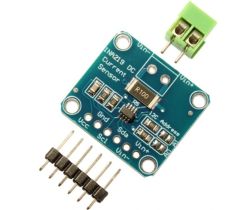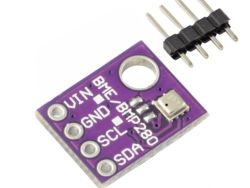I have an ESP32 and it serves as a receiver that receives a command from a transmitter (a panel written in HTML with buttons). The buttons light or turn off the LEDs hooked up to the ESP32. I also hooked up a BME280 temperature sensor (2 power wires, 2 communication wires).
The BME280 is the 5 volt version, I don't have another for 3.3 volts, but it supposedly works connected to the power pin for 3.3 volts.
However, after using the ESP32, the sensor and controlling the LEDs via the panel for a while, the ESP32 sort of crashes. At first I set it to receive sensor data on the ESP32 every second, then every 5 seconds, now every minute. When checking the sensor data every minute, this problem of seemingly hanging up is unnoticeable, but after testing the control and readout for a while, something doesn't seem right to me about the ESP32's behaviour. Maybe I would need to test longer to better notice the unstable operation.
I wanted to add a temperature sensor to the panel and additionally an INA219 voltage measurement sensor, but the temperature sensor, as well as the voltage measurement sensor, use the I2C bus for communication and now I don't know too much if this is a good solution.

 .
.
The voltage would be good to be tested practically every second, possibly every few seconds, because this module is to be hooked up to the battery, so there you need information about what the voltage will be e.g. when switching on some motor, so it would be good to have these results live fresh all the time.
However, I wonder if this can be implemented. Just hooking up the temperature sensor where the temperature is tested (the sensor measures temperature, pressure and humidity) is already causing problems, but I'm not sure if the problem is the voltage being too low, so this sensor is freezing up the ESP32, or if the frequency of the results is looping up the ESP32.
Maybe someone has dealt with ESP32 and sensors like this and observed some strange behaviour and knows why this happens or how to remedy it. I've been trying to optimise a simple program that runs on the ESP32 to control the LEDs as well as read the results from the sensor, but sooner or later when the temperature sensor is running the ESP32 hangs up, so I don't know whether to look for a solution or put the add-ons away and just focus on the control to make it possible, as the simple sensor is already crashing everything.
Maybe someone can advise something on this topic.
The BME280 is the 5 volt version, I don't have another for 3.3 volts, but it supposedly works connected to the power pin for 3.3 volts.
However, after using the ESP32, the sensor and controlling the LEDs via the panel for a while, the ESP32 sort of crashes. At first I set it to receive sensor data on the ESP32 every second, then every 5 seconds, now every minute. When checking the sensor data every minute, this problem of seemingly hanging up is unnoticeable, but after testing the control and readout for a while, something doesn't seem right to me about the ESP32's behaviour. Maybe I would need to test longer to better notice the unstable operation.
I wanted to add a temperature sensor to the panel and additionally an INA219 voltage measurement sensor, but the temperature sensor, as well as the voltage measurement sensor, use the I2C bus for communication and now I don't know too much if this is a good solution.

 .
.The voltage would be good to be tested practically every second, possibly every few seconds, because this module is to be hooked up to the battery, so there you need information about what the voltage will be e.g. when switching on some motor, so it would be good to have these results live fresh all the time.
However, I wonder if this can be implemented. Just hooking up the temperature sensor where the temperature is tested (the sensor measures temperature, pressure and humidity) is already causing problems, but I'm not sure if the problem is the voltage being too low, so this sensor is freezing up the ESP32, or if the frequency of the results is looping up the ESP32.
Maybe someone has dealt with ESP32 and sensors like this and observed some strange behaviour and knows why this happens or how to remedy it. I've been trying to optimise a simple program that runs on the ESP32 to control the LEDs as well as read the results from the sensor, but sooner or later when the temperature sensor is running the ESP32 hangs up, so I don't know whether to look for a solution or put the add-ons away and just focus on the control to make it possible, as the simple sensor is already crashing everything.
Maybe someone can advise something on this topic.





